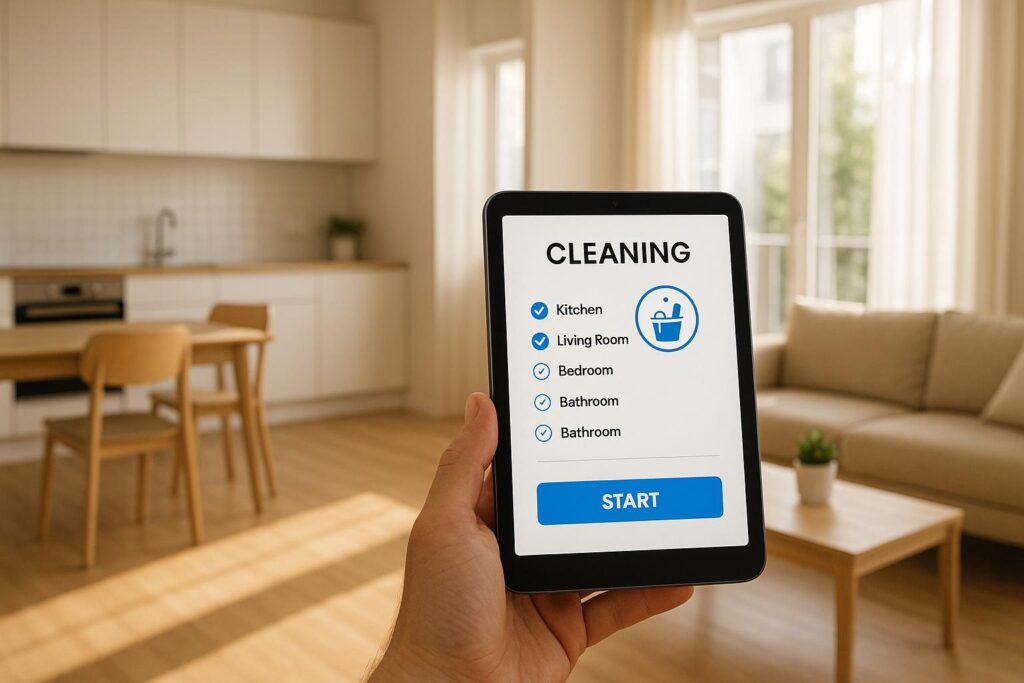A 1031 exchange lets you sell investment property and reinvest the proceeds into another property without paying capital gains taxes immediately. It’s named after Section 1031 of the IRS tax code and is a powerful tool for real estate investors to grow wealth.
Key Points to Know:
- Tax Deferral: Avoid paying 15%-20% federal capital gains tax (plus state taxes) by reinvesting the full sale amount.
- Eligible Properties: Includes commercial real estate, rental properties, land, and industrial facilities. Excludes primary residences and fix-and-flip projects.
- Deadlines:
- Identify replacement properties within 45 days.
- Complete the purchase within 180 days.
- "Like-Kind" Rule: Replacement property must be similar in nature and equal or greater in value.
- Qualified Intermediary (QI): A neutral third party is required to handle the transaction.
Benefits:
| Scenario | Traditional Sale | 1031 Exchange |
|---|---|---|
| Sale Price | $500,000 | $500,000 |
| Taxes Paid | $100,000 | $0 |
| Reinvestment Funds | $400,000 | $500,000 |
Exchange Options:
- Standard Exchange: Sell first, buy later.
- Reverse Exchange: Buy first, sell later.
- Construction Exchange: Use funds for property improvements.
Risks to Watch:
- Missing deadlines voids the tax benefit.
- Receiving leftover cash ("boot") triggers taxes.
- Local markets may make finding replacement properties challenging.
A 1031 exchange is a great way to grow your investment portfolio, but it requires strict adherence to IRS rules. Work with professionals to ensure compliance and maximize your benefits.
How To Qualify For A 1031 Exchange? – CountyOffice.org
Property and Investor Requirements
To successfully complete a 1031 exchange, you must strictly follow IRS rules regarding property and investor qualifications.
Eligible Property Types
The following property types qualify for a 1031 exchange:
- Commercial real estate like office buildings, retail spaces, or warehouses
- Rental properties, including apartment buildings and single-family homes
- Raw land or agricultural properties
- Industrial facilities
- Mixed-use properties
However, some properties do not qualify, including:
- Primary residences
- Vacation homes or second homes not used as rentals
- Properties held for resale, such as fix-and-flip projects
- Personal property (per 2018 tax law changes)
Once you’ve confirmed your property is eligible, you must adhere to strict rules to maintain the tax deferral benefits.
Property Exchange Rules
The IRS mandates that exchanged properties must be "like-kind", meaning they should be similar in nature, even if they differ in quality. For example:
| Property Type Being Sold | Acceptable Exchange Properties |
|---|---|
| Apartment Building | Office Complex, Retail Center, Industrial Warehouse |
| Vacant Land | Improved Commercial Property, Multi-family Building |
| Strip Mall | Self-storage Facility, Medical Office Building |
The replacement property must be of equal or greater value than the one being sold. If there’s any cash left over (referred to as "boot"), it will be taxable.
Required Third Parties
A Qualified Intermediary (QI) is essential for handling the exchange. The QI oversees all documentation, manages funds, and ensures compliance with key deadlines, such as:
- 45 days to identify replacement properties
- 180 days to complete the exchange
You cannot act as your own QI, nor can certain related parties, like:
- Family members
- Your real estate agent
- Your attorney
- Your accountant
- Anyone who has served as your agent in the last two years
The QI must be an independent third party with no prior relationship to you outside their role as an intermediary. This ensures the process complies with IRS regulations and maintains the exchange’s integrity.
Exchange Deadlines and Rules
The IRS imposes strict deadlines for every 1031 exchange. Missing these deadlines will void the exchange and trigger immediate tax liability.
45-Day Property Selection
Once you sell your property, the clock starts ticking. The 45-day identification period begins the day after the sale closes. During this time, you must provide a written list of potential replacement properties to your Qualified Intermediary. You can use one of these three identification methods:
- Three-Property Rule: List up to three properties, regardless of their value.
- 200% Rule: List as many properties as you want, as long as their combined value doesn’t exceed 200% of the sold property’s value.
- 95% Rule: List as many properties as you want, provided you purchase at least 95% of their total value.
Your list must include:
- The property address or legal description
- A clear description of the property type
- The estimated purchase price
- Percentage ownership interest, if relevant
180-Day Completion Window
After selling your property, you have 180 days to finalize the purchase of your replacement property. Here’s a quick breakdown:
| Milestone | Deadline | Notes |
|---|---|---|
| Purchase Agreement | By Day 120 | Aim to have the contract signed by this date. |
| Closing | By Day 180 | Title transfer and funding must be completed. |
If your tax return deadline falls before the 180 days are up, you’ll need to complete the exchange by that earlier date.
Property Value Rules
To preserve your tax deferral benefits, the replacement property must meet specific value criteria:
- Equal or Greater Value: The purchase price must match or exceed the value of the sold property.
- Invest All Cash Proceeds: All cash from the sale must go toward the replacement property.
- Equal or Greater Debt: If the sold property had a loan, you must either match or exceed that loan amount – or make up the difference with cash.
Any shortfall, known as "boot", will be taxed immediately.
| Component | Sold Property | Required for Replacement |
|---|---|---|
| Sale Price | $1,000,000 | ≥ $1,000,000 |
| Existing Debt | $400,000 | ≥ $400,000 |
| Net Equity | $600,000 | ≥ $600,000 |
sbb-itb-4c99469
Exchange Methods
Understanding the various 1031 exchange methods can help investors select the best option for their needs. Each approach has specific rules to maintain tax-deferred status.
Standard Exchange
A standard exchange works like this:
- Sell your current investment property.
- Transfer the sale proceeds to a Qualified Intermediary (QI).
- Complete the exchange within the IRS deadlines.
| Phase | Timeline |
|---|---|
| Sale | Day 1 |
| Identification | Days 1–45 |
| Closing | By Day 180 |
Reverse Exchange (Purchase-First)
In a reverse exchange, the replacement property is purchased before selling the current property. This method is particularly useful in competitive markets. Key requirements include:
- An Exchange Accommodation Titleholder (EAT) must hold title to one of the properties.
- Transactions must adhere to the IRS’s 45-day and 180-day deadlines.
- Additional costs are incurred for EAT services and related documentation.
Construction Exchange
A construction, or improvement, exchange allows investors to use exchange funds for property upgrades. The following rules apply:
| Construction Exchange Requirements | Details |
|---|---|
| Improvement Timeline | Must be completed within the exchange period |
| Fund Management | QI oversees all construction payments |
| Property Identification | Planned improvements must be included |
| Value Requirements | Final property value must meet or exceed the relinquished property |
This type of exchange provides the opportunity to enhance a property but requires careful planning and management. These methods lay the groundwork for evaluating potential risks and market dynamics.
Risk Factors and Issues
Understand and address potential challenges in 1031 exchanges.
Ineligible Exchange Partners
The IRS requires strict compliance when selecting exchange partners. Working with related parties can raise concerns about self-dealing, potentially invalidating the exchange. To avoid these pitfalls, ensure all parties are independent and meet the IRS’s arm’s-length transaction standards. It’s always a good idea to consult with a tax or legal expert to confirm eligibility.
Tax Complications
Certain aspects of a property exchange can lead to unexpected tax liabilities. For example, property improvements or personal property components may trigger depreciation recapture, which is taxable. Additionally, receiving any non-like-kind property or cash (known as "boot") during the exchange can result in immediate taxation on that portion. Since tax outcomes can vary, collaborating with a tax professional is crucial to understanding your specific situation.
Local Market Factors
External market conditions can create additional challenges. In highly competitive areas, finding a suitable replacement property within the required timeframe can be tough. Rapid changes in property values and shorter due diligence periods add further pressure. Local expertise, such as insights from the Austin Local Team, can provide a better understanding of market trends and help investors navigate these hurdles more effectively.
Conclusion
Successfully navigating a 1031 exchange requires careful attention to IRS rules and deadlines. Both the property you sell and the one you acquire must meet specific criteria, including being used for investment or business purposes and falling under like-kind property guidelines.
The IRS enforces strict deadlines for identifying and closing on replacement properties, starting from the sale date. These timelines are non-negotiable and form the backbone of a compliant exchange process.
To stay on track, collaborate with licensed exchange facilitators, real estate professionals, and tax advisors who can guide you through the process. In fast-moving markets like Austin, having up-to-date market data and expert advice is essential. Tools like the Austin Local Team’s comparative market analysis can help you identify replacement properties that align with IRS rules and your investment objectives. Combining technical compliance with local market knowledge can give you a strategic edge in achieving your financial goals.





